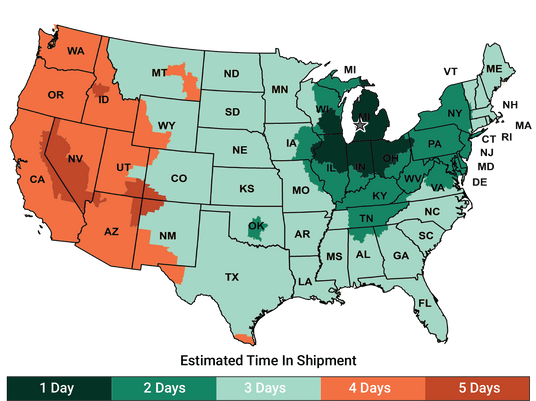Rubus idaeus 'Heritage'
Rubus idaeus 'Heritage' is backordered and will ship as soon as it is back in stock.
Couldn't load pickup availability
- Pot Size: 5.25 Inch Square Pot
- Common Name: Red Raspberry
- Exposure: Full Sun to Partial sun
- Hardiness Zone: 4-8
- Bloom Color: White
- Bloom Time: Summer-Fall
- Garden Height: 5-6 Inches
- Garden Spread: 3-4 Inches
Rubus 'Heritage' is an everbearing variety with juicy, dark red fruit that is great fresh or made into jams, pies, or other tasty treats. It produces a decent crop in summer and then has an abundant fall harvest. The large, firm berries will not fall apart when picked if left for a day or two. This is a self-fruitful plant that does not require a separate pollinizer, but you may want multiple plants for more of that delicious fruit! Easy to grow. Bred from the Native American red raspberry.
Uses: Cottage Gardens, Erosion Control, Mass Planting, Naturalizing, Slopes, Vegetable Gardens, Woodland Gardens
Nature Attraction: Birds, Bees, Butterflies
Notable Features: Edible, Fast Growing, Easy Care
Growth Habit: Rounded, Shrubby, Spreads by Rhizomes
Homeowner Growing Tips
Homeowner Growing Tips
Delivery and Shipping
Delivery and Shipping
Our current processing time is 1-3 business days. See map at the bottom of the product page for transit time once shipped.
We guarantee our plants to arrive in acceptable condition. If there are any issues upon delivery, please email support@romencegardens.com within 48 hours and we will resolve the issue.
Beautiful Plants Shipped Right To Your Door
Our current processing time is 1-3 business days.

Estimated Time In Transit
This map shows the estimated amount of time that your order will spend in transit on its way to you after it leaves our facility. Transit time does not include shipping day.









